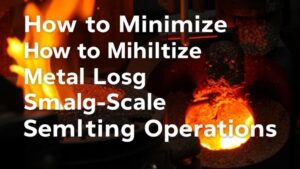Identifying the Relationship Between Gold and Copper in Polymetallic Deposits
Identifying the Relationship Between Gold and Copper in Polymetallic Deposits
The relationship between gold and copper in polymetallic deposits is a subject of substantial interest within the field of geology and economic mineral exploration. Understanding this relationship can help geologists identify areas rich in these valuable resources and improve extraction strategies. This article delves into the geological processes that form polymetallic deposits, the significance of the gold-copper relationship, and how these insights apply to mining operations.
The Nature of Polymetallic Deposits
Polymetallic deposits are geological formations that contain two or more economically valuable metals. e deposits often include copper, gold, silver, lead, and zinc, among others. They are usually formed in hydrothermal settings, where hot, mineral-rich fluids percolate through rock formations, depositing metals as they cool.
- Hydrothermal deposits, which result from fluids in the Earth’s crust.
- Epithermal deposits, which form in volcanic regions.
- Mesothermal deposits, typically associated with mid-level temperatures.
In these settings, gold and copper may be found in varying ratios, which can indicate the processes that led to their deposition and their potential economic viability.
Geological Processes Influencing Gold-Copper Relationships
The relationship between gold and copper can be influenced by several geological processes, including:
- Temperature and Pressure Conditions: High temperatures and pressures favor the solubility of copper and other metals. Cooling of these fluids as they rise allows for metal deposition, with the minerals forming depending on the specific conditions encountered.
- pH and Sulfide Concentrations: The pH of the hydrothermal fluids can significantly impact the formation of mineral assemblages. In acidic conditions, gold tends to bond with sulfide minerals, whereas copper may form more complex compounds.
- Fluid Composition: The presence of chlorine and other ligands can alter the solubility of metals in solution, affecting the eventual precipitation of minerals.
Real-World Applications of Gold-Copper Relationships
Understanding the relationship between gold and copper in polymetallic deposits has practical implications for mineral exploration and extraction. A notable example is the Grasberg mine in Indonesia, one of the largest copper-gold deposits globally. The deposit contains significant quantities of both metals, which allows the operation to capitalize on the concurrent extraction of copper and gold, optimizing economic returns.
Data from the mine indicates that for every ton of ore, an average of 1.07 grams of gold and 1.02% copper are extracted, demonstrating a strong correlation between the two metals that aids in the efficient planning and operation of mining activities.
Challenges in Assessing the Gold-Copper Relationship
Despite the potential benefits of understanding the relationship between gold and copper, several challenges remain:
- Variable Concentration: The concentration of gold and copper can vary significantly within a single deposit, making it difficult to predict their economic viability.
- Market Fluctuations: The prices of gold and copper can fluctuate independently, which affects the economic feasibility of extracting one or both metals.
- Environmental Considerations: Mining activities can have significant environmental impacts, necessitating careful planning to mitigate damage while optimizing resource extraction.
Conclusion
To wrap up, identifying the relationship between gold and copper in polymetallic deposits requires a multifaceted understanding of geological processes and mining economics. By analyzing the factors that govern this relationship, geologists can enhance the exploration of lucrative deposits and guide efficient mining practices. As the demand for both gold and copper continues to rise, the insights gained from these relationships will be critical in meeting global mineral needs.
Actionable Takeaways
- Invest in advanced geological modeling software to assess polymetallic deposits more effectively.
- Conduct thorough geochemical analyses of areas with known copper deposits to evaluate their gold potential.
- Stay informed about market trends for both metals to maximize economic viability in mining operations.
